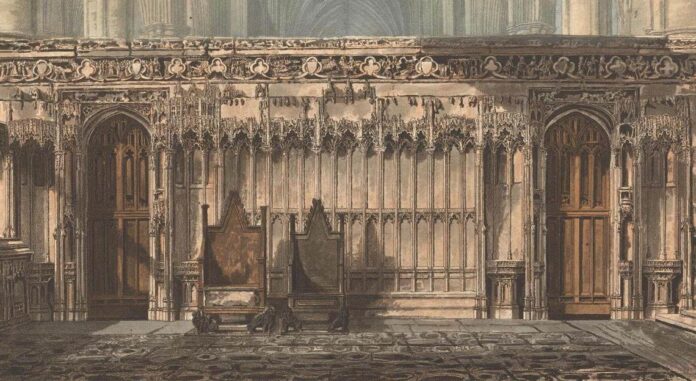During the coronation of King Charles III on May 6 in London, the monarch will be seated next to a carved Scottish object known as the Stone of Destiny. Scientists recently discovered new information about the 800-year-old relic, including unexplained hidden symbols. This information was recently revealed by the Historic Environment Scotland (HES), which cares for the ancient stone.
The Stone’s Story
English monarchs began using the Stone of Destiny in coronation ceremonies in the 13th century. On Saturday, May 6, 2023 it will be placed in the chair that Charles sits on during the ceremony at Westminster Abbey. The stone was initially transported from Scotland to England in 1296, returning to its homeland in the 20th century. Its origins are unknown, and its mysterious past makes it a fascinating object for historians and scholars.
HES recently analyzed the stone and created a digital 3D model in order to see more details in the object. Researchers found previously unrecorded markings on the surface that some believe resemble Roman numerals. However, Ewan Campbell, a senior lecturer of archaeology at the University of Glasgow in the U.K., who was not involved in the new research, told Live Science that the carvings may be crude crosses instead. He believes they may have been etched on the stone after it was moved to England.
Researchers also got a better look at the stone’s geological features, its sandstone formation, tool marks, and other details from a repair that was made in 1951. The imaging confirmed that multiple stonemasons have worked on the stone with various tools.
Ewan Hyslop, Head of Research and Climate Change at HES, said: “The discovery of previously unrecorded markings is also significant, and while at this point we’re unable to say for certain what their purpose or meaning might be, they offer the exciting opportunity for further areas of study.”
Studying the Stone
A previous scientific analysis on the stone occurred in 1998 through the British Geological Survey. It determined that the sandstone was equivalent to sandstone from the Scone Sandstone Formation located near the Scone Palace near Perth.
The latest X-ray fluorescence (XRF) analysis also revealed traces of copper alloy on the surface that correspond with a dark stain in the middle of the stone. As a result, it is believed a bronze or brass item such as a saint’s bell was placed on the artifact at some point in the past. Researchers also found evidence that a plaster cast may have been taken of the stone, which is intriguing because there are no records of a cast being made of the object.
The best thing about the new 3D imaging is that the scans and analysis will help researchers learn more about the stone. Sally Foster, a professor of heritage and conservation at the University of Stirling, noted, “The Stone of Destiny is rarely moved and it’s not easy for scholars and the public to look at it in its entirety, close-up or for any extended period.”
These findings are “intriguing new clues” about the stone’s history, according to Ewan. “We may not have all the answers at this stage, but what we’ve been able to uncover is testament to a variety of uses in the Stone’s long history and contributes to its provenance and authenticity,” he noted.
To see the 3D digital model of the stone, visit Sketchfab.
By Noelle Talmon, contributor for Ripleys.com
EXPLORE THE ODD IN PERSON!
Hits: 0












